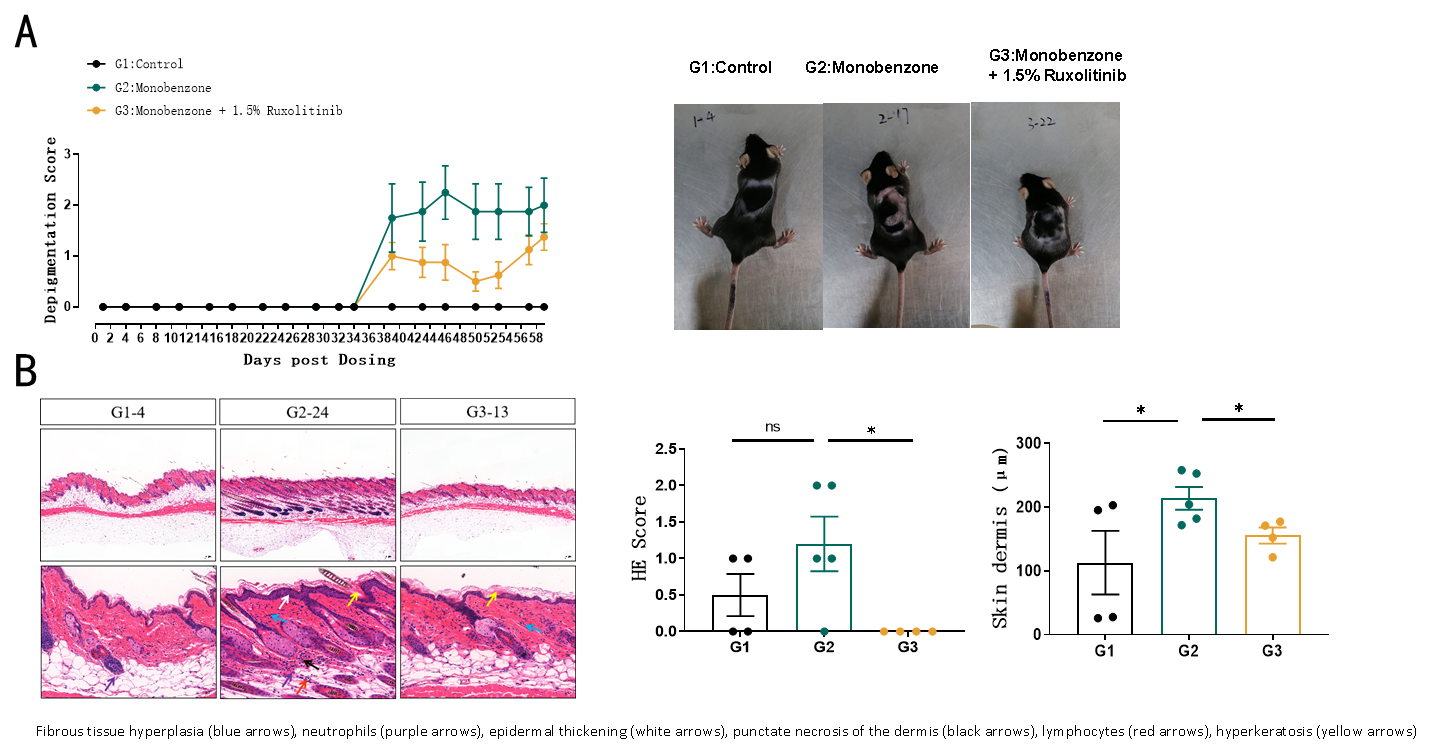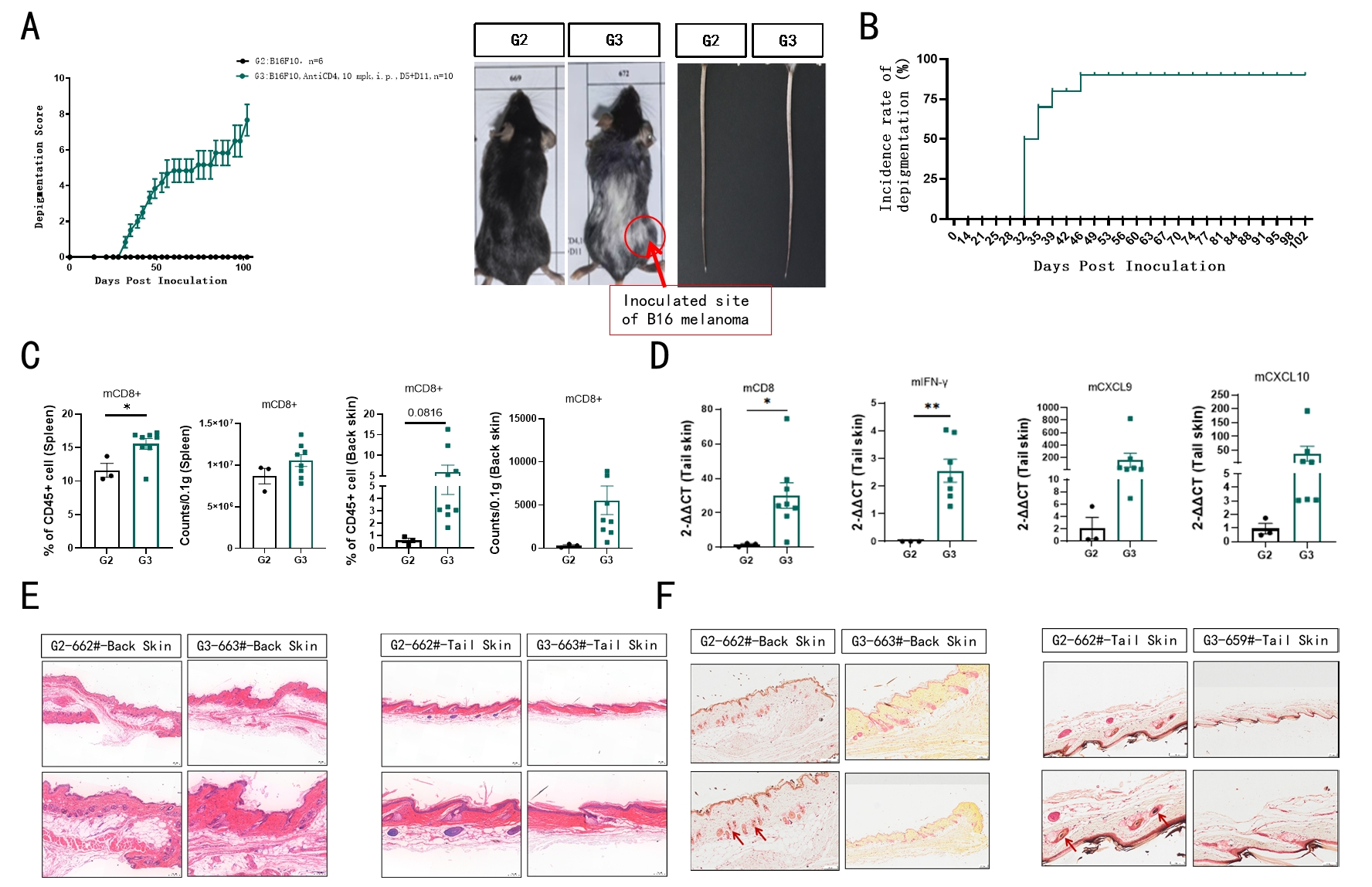
June 25th marks World Vitiligo Day. On this day, we stand with millions around the world to raise awareness and compassion for those living with vitiligo, a skin condition that causes loss of pigmentation and affects up to 2% of the global population.
Vitiligo is an acquired depigmenting skin disorder affecting 0.5%-2% of the global population. Perhaps one of the most famous people who lived with vitiligo was the late pop star Michael Jackson. Current treatments include glucocorticoids and calcineurin inhibitors (e.g., tacrolimus ointment, pimecrolimus cream). However, efficacy is often partial and relapse rates remain high.
In recent years, novel biologics like JAK inhibitors (baricitinib, ruxolitinib) have offered new promising immunomodulatory approaches by targeting cytokine signaling pathways, such as IFN-γ and downstream JAK-STAT signaling pathway. Despite initial success in inducing repigmentation, the long-term safety, durability of response and patient stratification remain open questions. Other treatment approaches include phototherapy adjuncts such as psoralens, which, when combined with ultraviolet irradiation, stimulate melanin production but may cause side effects that includeerythema, blisters, or even increased risk of skin cancer. Overall, while existing vitiligo medications achieve partial repigmentation, they cannot cure the disease and carry multiple side effects. The need for more effective, targeted, and safer therapeutics is pressing.
Robust preclinical models are essential to accelerate drug discovery in vitiligo.
At GemPharmatech, we provide two distinct immunodeficient mouse models of vitiligo to support early-stage drug efficacy and translational research. These models enable in vivo testing of candidate therapies, from small molecules to biologics, under controlled immunological contexts.
As the field advances, preclinical innovation will remain central to delivering durable, mechanism-based treatments for vitiligo patients worldwide.

The Monobenzone-induced vitiligo model
Monobenzone (MBZ, monobenzyl ether of hydroquinone) induces vitiligo-like depigmentation through a multi-step process, primarily targeting melanocytes and disrupting skin pigmentation homeostasis. This model recapitulates clinical vitiligo features, including progressive depigmentation and perilesional inflammation, making it valuable for evaluating vitiligo related drugs (such as JAK inhibitors, immunomodulators) or studying the molecular mechanisms of depigmentation.
B16 melanoma tumor cell -induced vitiligo model
The vitiligo model induced by B16 melanoma cells primarily mediates the destruction of autologous melanocytes through immune responses triggered by tumor cell antigens. Like clinical vitiligo, this model characterized by CD8+ T cell-mediated destruction of autologous melanocytes as the core mechanism and suitble for screening immunomodulatory drugs (such as JAK inhibitors, CTLA-4 agonists) and CD8+ T cell-related target drugs.
Model data presentation
The Monobenzone-induced vitiligo model

Figure1 Efficacy Evaluation of Ruxolitinib in Monobenzone-induced Vitiligo Model
A: Monobenzone-induced vitiligo model: skin depigmentation scoring (left) and dorsal skin photographs (right); B: HE staining of dorsal skin, as well as HE scoring statistics and dermal thickness statistics.
B16 melanoma tumor cell -induced vitiligo model

Figure2 Model data of B16 melanoma tumor cell -induced vitiligo model
A: B16 melanoma tumor cell -induced vitiligo model: skin depigmentation scoring (left) and dorsal skin and tail skin photographs (right); B: Incidence rate of depigmentation of model group; C: percentage of CD8+T cell number of spleen and back skin; D: mRNA level of CD8, IFN-γ, CXCL9 and CXCL10 in tail skin; E: HE staining of dorsal skin and tail skin; F: Masson Fontana staining of dorsal skin and tail skin.
On World Vitiligo Day, we reaffirm our commitment to advancing research that supports the vitiligo community. By contributing robust preclinical models and scientific expertise, GemPharmatech aims to enable the development of safer, more effective treatments that address the underlying mechanisms of this complex condition.
To learn more about our models, please contact us.


